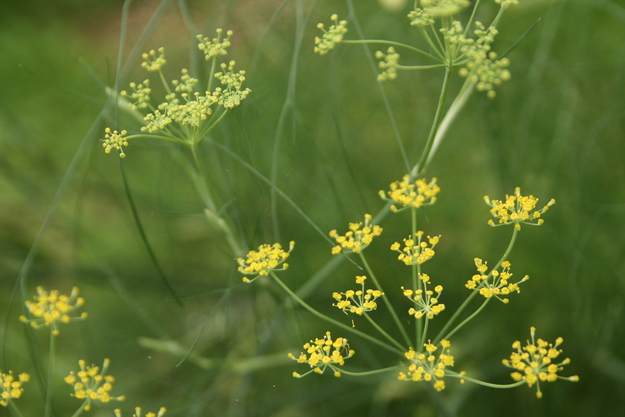Fennel, a surprising medicinal plant ally
Fennel, or Foeniculum vulgare, is a very well-known culinary herb and vegetable native to the Mediterranean. It’s in the same family of carrots, celery and parsley. Fennel has a long history of use not only in cooking, but also as a medicinal plant: it has traditionally been used in Europe mainly to aid with coughs and digestion. But this plant also contains phytoestrogens, making it an incredibly useful remedy for many female reproductive issues.
Properties for the female reproductive system
«As a medicinal herb, I particularly recommend it to all women at all stages of life. For some it will help with the periods, and for others it will help with the flow of milk (...) It is sometimes said that the plant has a tendency to induce abortions, but I personally do not believe this is true.»
– Maurice Mességué, Health secrets of plants and herbs, 1979
All components of the Fennel plant are edible, but its fruits (also known as seeds) and roots are the most commonly used parts for medicinal purposes. Their main effects are relaxing the sphincters, decreasing spasms of the digestive tract, helping the respiratory system, but also having estrogenic activity and increasing breastmilk production.
Fennel essential oil – typically extracted from the seeds – possess emmenagogue and galactagogue properties, which means that they initiate and promote menstrual flow and increase milk flow respectively. Emmenagogue herbs, like Fennel, are capable of stimulating the menstrual flow, even when it is not due, which is why many are also abortifacient. This property explains why Fennel has been used for the treatment of amenorrhea (absence of monthly bleeding). Moreover, its seeds are used in folk remedies to treat painful menstruation and Fennel essential oil and oil drops have been proven effective in relieving menstrual pain. In traditional Chinese medicine Fennel is used to treat any kind of lower abdominal pain. The fruits are also said to benefit nausea, another common symptom, along with pain, that can appear during menstruation.
But Fennel’s benefits for women are not limited to aiding nursing and alleviating period symptoms: Fennel oil also demonstrated antimicrobial activity in vitro against bacteria extracted from people with urinary tract infections, which occur more often in women than in men, with post-menopausal women having higher rates of UTIs because of pelvic prolapse and lack of oestrogen. Overall, Fennel could be an extremely valuable ally to anyone with a uterus!
A mysterious ancestor: Silphium
Although it is unclear if Fennel also has abortive properties, it is interesting to look back into the history of abortive plants and finding Silphium, which is now an unidentified plant – since apparently it went extinct during Roman times – but is thought to be a relative of the giant Fennel, a group of spontaneous plants abundant in the Mediterranean. Before its extinction, Silphium – like Fennel – was widely appreciated and used by ancient Greeks and Romans, possibly also serving as contraceptive and abortifacient, a use that speaks of the ancient (but also contemporary) necessity to have full access to bodily autonomy and reproductive healthcare.
Sources
-
Thomas Bartram, Bartram’s Encyclopedia of Herbal Medicine, 1998.
-
Kerry Bone and Simon Mills, Principles and Practice of Phytotherapy, 2013.
-
Maurice Mességué, Health Secrets of Plants and Herbs, 1979.
-
Michael Murray, Joseph Pizzorno, Lara Pizzorno, The Encyclopedia of Healing Foods, 2005.
-
Dr. Aviva Romm, Botanical Medicine for Women’s Health, 2009.
- Wikipedia. [https://en.wikipedia.org/wiki/History_of_abortion#Greco-Roman_world]
